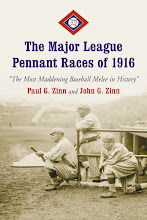Thinking some more about "The Suspicions of Mr. Whicher" and its truly innocent victim, I started to think about how some of the great writers of detective fiction cast both parts. Dorothy Sayers, for example, in her first Peter Wimsey novel, "Who's Body?" paired an innocent victim with a truly vicious villain. After that, however, she did things very differently. If we think about "Clouds of Witness," "The Nine Tailors," "Murder Must Advertise," and "The Five Red Herrings" in each case the victim is at least unsympathetic and in some cases worse than the villain. Some of the villains, or more appropriately the murders are very sympathetic - in the truest sense more innocent than the victim.
Conan Dolye, on the other hand, seems to have used a broader range of choices. In stories like "The Hound of the Baskervilles" and "The Speckled Band," the victim is very innocent while the villain is almost the embodiment of evil itself. There are, however numerous other stories - "The Abbey Grange" comes to mind, where like in the Sayers novels, the opposite is true.
It is hard to say what this means. One way to think about it is that Doyle had a broader range enabling him to use both approaches. However, in some ways, the innocent victim/evil villain is a more simplistic approach, which is not to say there is anything wrong with a story where good fights evil. The more muted approach used by Sayers and, no doubt, others makes for a more complex story that can engage our intention and interest in more multifaceted ways than can the clear good/evil approach.
Saturday, August 9, 2008
Subscribe to:
Post Comments (Atom)



No comments:
Post a Comment